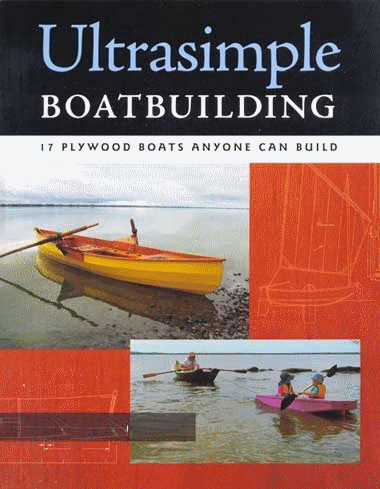
Over the years many people have asked me for advice about plywood for their boatbuilding projects. One of the problems is that plywood types vary tremendously from one country to another and between suppliers in the same country. Sometimes the same supplier offers a few different grades and finishes, causing much confusion for the guy who is doing the buying. Maybe this post will help with making the choice.
If you are in North America, Europe or even South Africa, you are lucky enough to have a wide selection from which to choose, generally of high quality. Builders of my boats in many other countries simply dont have the luxury of choice, with only one grade available. When that is the case the only available grade generally also has some disadvantages when compared with the optimum that may be available elsewhere. For that reason, I am writing from the point of view of making the most of the plywood that you can get rather than insisting that you must build with plywood fabricated from any particular species of wood or that you must build with certified marine plywood.
The most important thing to ensure is that your plywood was glued with a suitable waterproof glue. Marine plywood is only manufactured with resorcinol or melamine glues, no epoxy or other glue qualifies for certification in marine plywood. This is for good reason; resorcinol glue does not let go of the wood that it is bonding, whether that wood is wet or dry. The wetter the wood, the stronger the bond. Epoxy, in contrast, likes the wood to be fairly dry and can come loose if the wood is saturated with water. I have seen epoxy simply peel away from very wet wood.
Resorcinol is dark brown to dark purple in colour, most other glues are clear or light in colour. Look at the edges of the plywood sheets before you buy. You should see thin dark lines at the joints between the various layers. If you dont see dark glue lines then dont consider using it in a boat because it is not likely to stand up to exposure to the elements.
Exterior grade plywood is generally also glued with resorcinol. Many boats are built with exterior grade plywood and they can give give long service. Exterior grade plywood is considerably cheaper than marine grade but everything comes at a price, of course. Exterior grade is heavier, made to a lower and less stringent standard and could have any of a variety of timber species in the construction. Marine plywood is generally manufactured to British Standard BS1088 or BS6566, which have very tight requirements that cover the thicknesses and standards of the veneers, veneer jointing and patching within the boards and the surface finishes. Exterior grade is likely to have a lot more patching on the surface, splits and knots in the surface veneers and voids showing in the edges of the sheets.
If you choose to build with exterior plywood, the edge voids are possibly what you should pay most attention to repairing. Those voids provide channels for water to travel into the centre of the board, from where it can penetrate to the very core of the hull skin and start rot problems. You can epoxy-coat the surfaces of the board to protect it but any exposed edge void has the potential to destroy your boat from inside the timber. The best thing to do is to mix some epoxy or resorcinol with some sawdust or other filler to make a sloppy paste that you can inject or squeeze into the open joints. Dont just push a little in to seal the opening at each end, force it as far into the joint as you can. If you can totally fill the void, so much the better. Filling the voids is worthwhile for the hull and deck skins. For the bulkheads and interior joinery filling to a distance of about 50mm (2") is OK.
To get back to marine plywood it can be manufactured from a variety of wood species, including okoume, mahogany or meranti. It can also be finished with decorative surface veneers of other species like teak, oak or cherry.
Weight and strength vary depending on specie of timber. If the designer has designed for okoume plywood and only mahogany or other heavier type is available, the designer may allow you to use thinner boards. The increased strength adds weight and might be compensated by reducing thickness. I originally calculated the Didi 26 for okoume plywood and detailed the hull and deck skin for 9mm thickness. I was asked by a builder in Russia to recalculate for beech plywood because that was all that he could get. The beech plywood was much heavier than okoume but also much stronger. My recalculation allowed the skin thickness to be reduced to 6mm and resulted in a weight gain of only about 15% in the plywood components and very little overall weight increase.
The extra stiffness of the heavier plywoods brings some benefits and some drawbacks. The extra stiffness imparts increased impact resistance but the plywood becomes more difficult to bend or twist. Our radius chine designs have a laminated curved portion of hull that is more easily done with okoume plywood than a stiffer type. The same applies to the Cape Cutter 19 and Cape Henry 21, which need okoume plywood for the bottom panels forward of the mast because stiffer sheets are too difficult to twist.
Plywood has more stiffness in one direction than the other. It bends more easily parallel with the surface grain than across the surface grain. If you are cutting a component that must bend considerably when being built into the boat then orient the grain so that it runs parallel to the curvature.
Increasing the number of layers, without changing wood species or plywood thickness, also adds both stiffness and weight. It gains stiffness because the greater number of layers lock the cross-grain more effectively. Wood stretches more across the grain than with the grain. In plywood, each crossing at a glue joint locks the cross-grain and prevents it from stretching. The result is that many thin layers are more stable than a smaller number of thick layers. It becomes heavier because glue is more dense than wood and the amount of glue in the sheet increases in direct proportion to the increase in number of glue lines. So, if you are doing something that needs flexibility in the sheet so that it can bend, go for less layers in your plywood. If you are doing something that doesnt need to bend and strength is more important, go for more layers. More layers equals more labour to make the plywood as well as more material in veneers and glue, so more layers also means more money.
Whatever grade or species of plywood you use, make sure that you properly seal all exposed edges of the plywood. If you dont it will absorb water or even moisture from the air through the end grain of the exposed edges. That moisture will travel deep into the sheet and with time may cause rot to start. Wet wood has more volume than dry wood, so it will swell from moisture absorption, possibly cracking your coatings.
Another reason for sealing the edges is very important if you live in an area where marine woodworm is a problem, or if you intend to sail through such an area. With properly coated plywood there is nowhere for the worm to enter the timber because everything is protected by a layer of epoxy. If it can get into the surface veneer through some damage to the surface coating then it is restricted to the surface veneer, limited from travelling further into the hull by glue lines. If the sheet edges are unprotected then the worm can get into any layer and probably will, destroying the integrity all the way through the board.
Finally, if you use a plywood that is made from fir or a species of pine, it will be worthwhile to add a light layer of glass reinforcement into the epoxy coating on the outside of your boat. This is because fir and pine plywoods generally have bad surfaces and are not as stable as other species. Unreinforced epoxy is not likely to hold the surface together, so it will soon crack, look unsightly and allow water to penetrate. For the sake of extending the life of your boat you should glass the outside if skinned with these plywoods.
Go to http://dixdesign.com/ to see our full range of boat designs.


0 komentar:
Posting Komentar